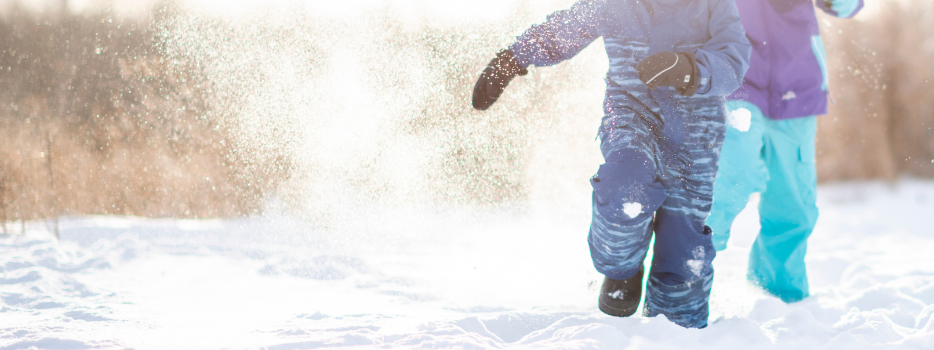In many places throughout the country, winter brings snow and ice. Even in areas that don’t get much snow, cold winter temperatures bring the need for more layers of clothing. As tempting as it may be to stay inside while it’s cold, getting fresh air in the winter is still essential for children’s physical and mental health. Many states’ childcare licensing organizations and school districts require children to have outdoor play every day. While winter weather may make it more challenging, children can still engage in safe outdoor activities with a few modifications.
Benefits of outdoor winter play
There are many reasons why outdoor play in the winter is beneficial to children. Getting outside provides a dose of vitamin D which everyone needs in the winter. Being outside in the fresh air strengthens children’s immune systems. Playing in the cold and on snow and ice provide unique challenges to children both physically and mentally which helps their problem-solving skills. Children also typically burn less calories in the winter due to more sedentary lifestyles. Outdoor play can help them burn off that extra energy.
Cold weather tips
- Check for temperature requirements with state licensing organizations. Be sure to take the wind into consideration. Wind can make the temperature feel much colder. The lowest temperature allowed for outdoor activity typically changes as children get older. For example, Wisconsin’s rules state for children two and under, the temperature with windchill needs to be 20 degrees or above to go outside. For children older than two, the requirement drops to zero degrees or above.
- Ensure children are dressed properly. This means warm enough snow pants, boots, jackets, hats, and mittens. Organizations should have extra clothing in case parents forget their children’s gear.
- Check periodically for wet clothes and mittens during outside time. Thinner mittens can get very wet, and this can be a recipe for disaster for small hands.
- Watch the time and don’t keep children outside too long if the temperature is on the lower end of the requirements.
- Check playgrounds and outdoor play areas for ice or other hazards.
- If children are going sledding, take steps to ensure the area is safe, and closely supervise sledders.






